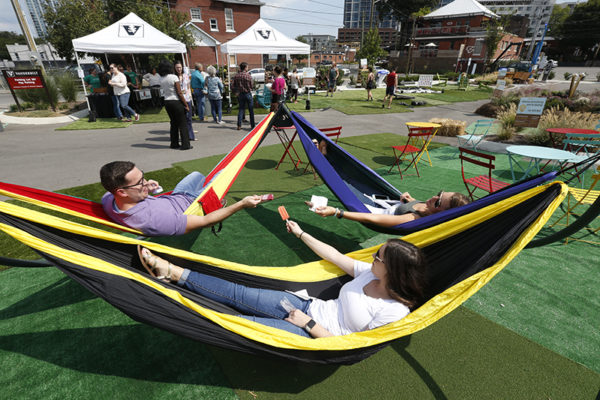FutureVU Progress FY2019 (July 2018 – June 2019)
FutureVU embodies the university’s core values and holistic approach to planning. While FutureVU began as a campus land use plan or master plan, it has evolved to include developing spaces on campus and investing in initiatives that support the people who live, work and learn in them. More than building projects, FutureVU considers core themes such as sustainability, transportation and mobility, accessibility and more. FutureVU represents a high-level, holistic framework for the physical development of campus, while also contemplating core principles that align with our academic mission. Together, FutureVU and the Academic Strategic Plan provide a comprehensive vision for the university’s footprint and provide a basis for campus stewardship that enhances the university’s mission. While FutureVU implementation continues, this report offers a glimpse at Vanderbilt’s achievements in FY2019.
TRANSFORMATIVE PROJECTS
Central to the FutureVU vision are a series of transformative projects to address specific opportunities and challenges in each of the campus neighborhoods. FutureVU provides a consistent strategy and guiding principles necessary for the realization of all capital projects and changes to the built environment.
Most Academic Affairs capital projects originate in the schools and colleges with the exception of student housing and campus-wide strategic projects. All capital projects are aligned with the mission of the university, the goals of the Academic Strategic Plan and the objectives of FutureVU.
The university has a variety of capital and built environment projects underway. For more information on the capital project process, as well as academic affairs capital projects, please visit the following website.
Projects Completed in FY2019
- Annette and Irwin Eskind Family Biomedical Library and Learning Center reopened in July 2018
- E. Bronson Ingram College opened in August 2019
- School of Nursing expansion completed
- Divinity renovation and expansion completed
- Fleming Yard redesign completed
- Studies on A&S/Historic Core and Sciences and Engineering completed
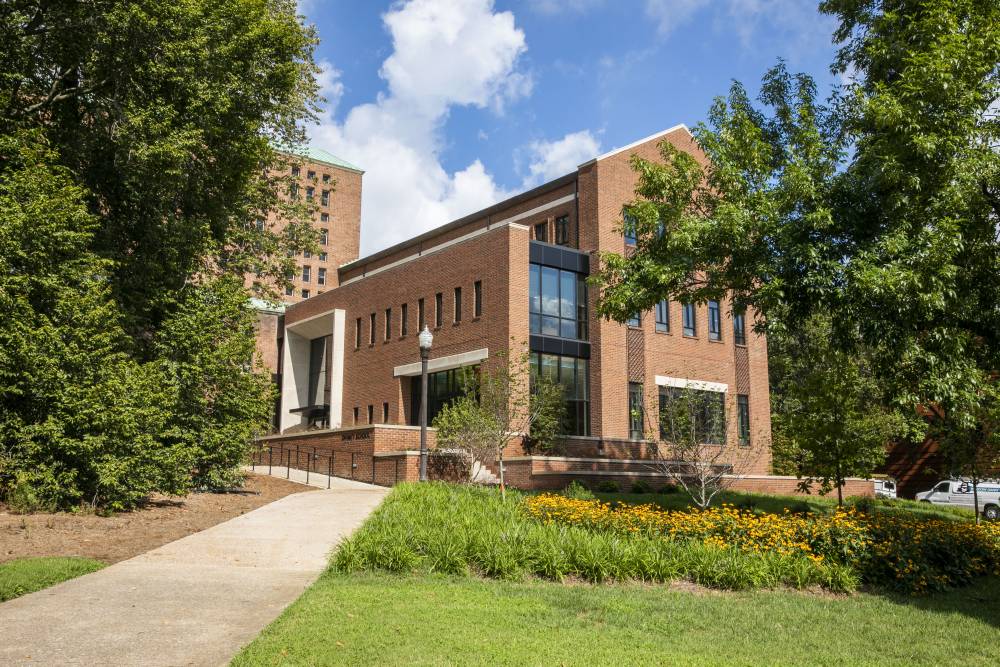
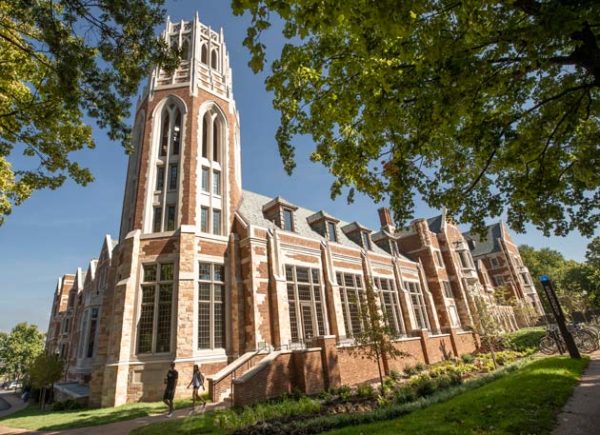
Projects and Studies Underway
- Re-imagination of West End neighborhood, including the expansion of residential colleges and neighborhood beautification efforts
- Phase 1 improvements to Peabody neighborhood, including renovation of Home Economics and Mayborn buildings, and a new accessible connector building
- A&S/Historic Core and Sciences and Engineering next steps being considered
- Re-imagination and visioning for the Central neighborhood
- Graduate and professional student housing efforts
- Owen master plan feasibility study underway
- 1101 19th Avenue building planning and renovations
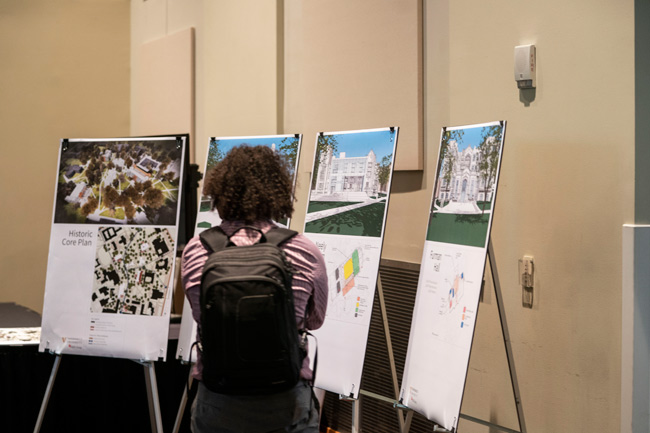
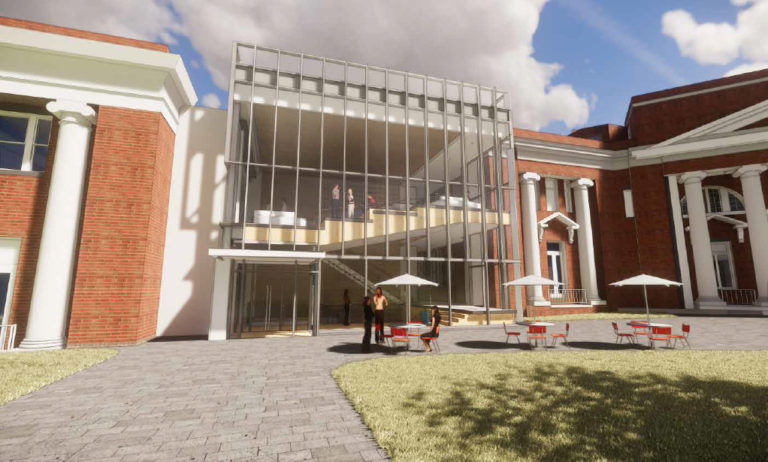
SITE, LANDSCAPE & STORMWATER MANAGEMENT
Overarching Site and Landscape Target
FutureVU builds on the park-like setting most notably found in the Historic Core neighborhood of campus. FutureVU aims to strengthen the beauty and diversity of campus by identifying and embracing existing open spaces and creating new open spaces, connecting edges and destinations in a legible manner, and opening visual connections throughout campus. In addition, increasing campus green spaces is a core component of the university’s long-term sustainability strategy.
Full Campus
Setting an overarching site and landscape target is necessary to achieving the goals outlined in FutureVU. The FutureVU framework calls for an overarching campus-wide target of 50% green space, 25% hardscape and 25% building footprint. As of the end of FY2019, the current campus breakdown is 38% green space, 33% hardscape and 29% building footprint. As development continues on campus, percentages will continue to be updated with the intention of achieving the campus-wide target.
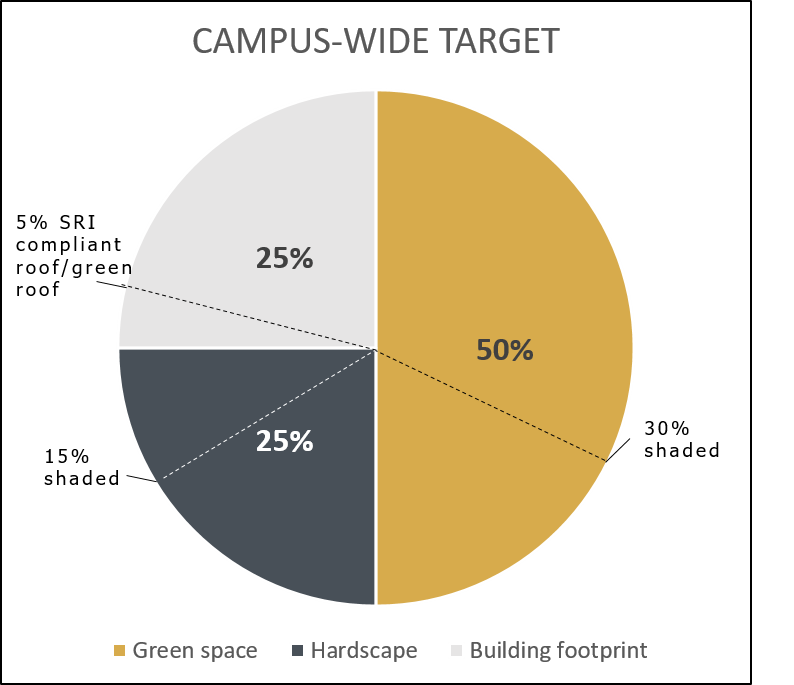
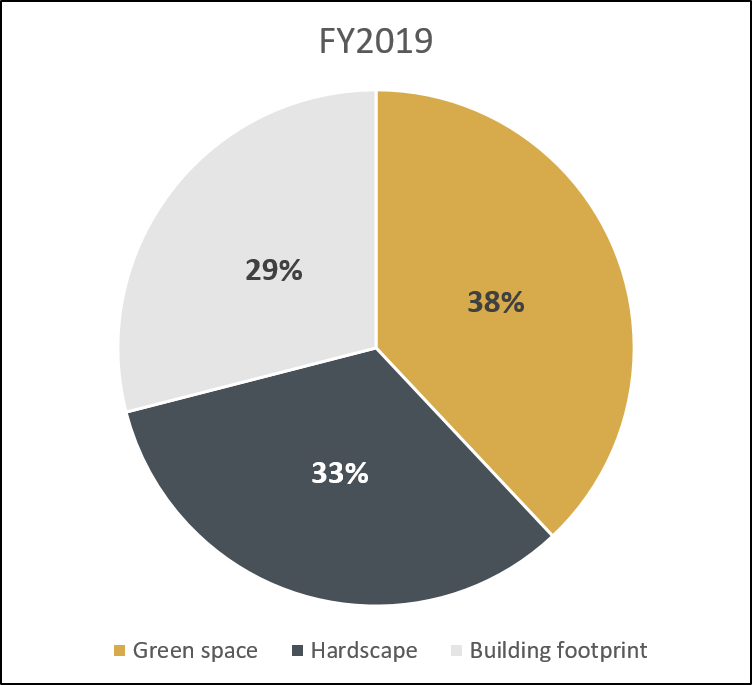
West End Neighborhood
Neighborhood specific targets were also identified as part of the FutureVU framework. The West End neighborhood is the first neighborhood undergoing significant transformation on campus. The re-imagination of the West End neighborhood includes a vision of expanding the park-like setting, as well as creating a positive, community atmosphere with an emphasis on accessibility. Consistent with the Academic Strategic Plan’s aim to enhance the undergraduate residential experience, three new residential colleges will be constructed along West End Avenue. A comparison of the neighborhood-specific target and current conditions will be provided in FY2020, including the expansion of green spaces such as the new Green.
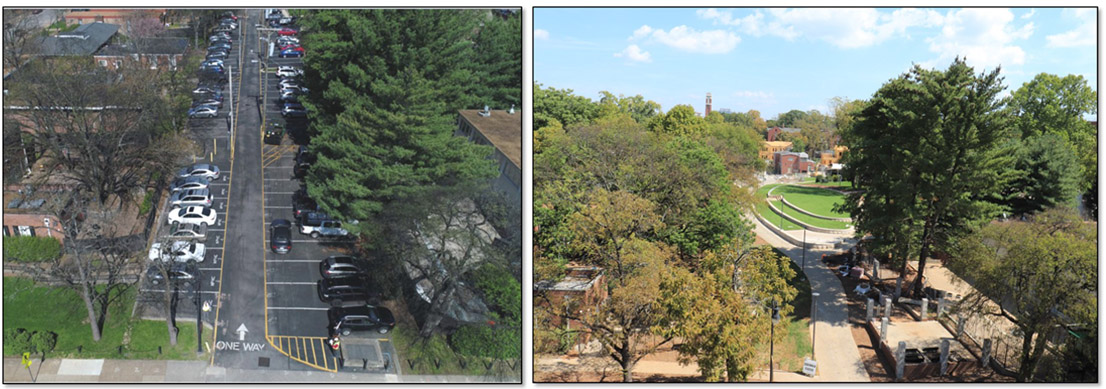
Stormwater Management
FutureVU considers stormwater management and water conservation core to landscape sustainability. Improved stormwater management can be tackled through a variety of methods, including:
- Canopy – slows water;
- Green spaces – absorb and slow run-off;
- Removing and limiting pavement – reduces run-off.
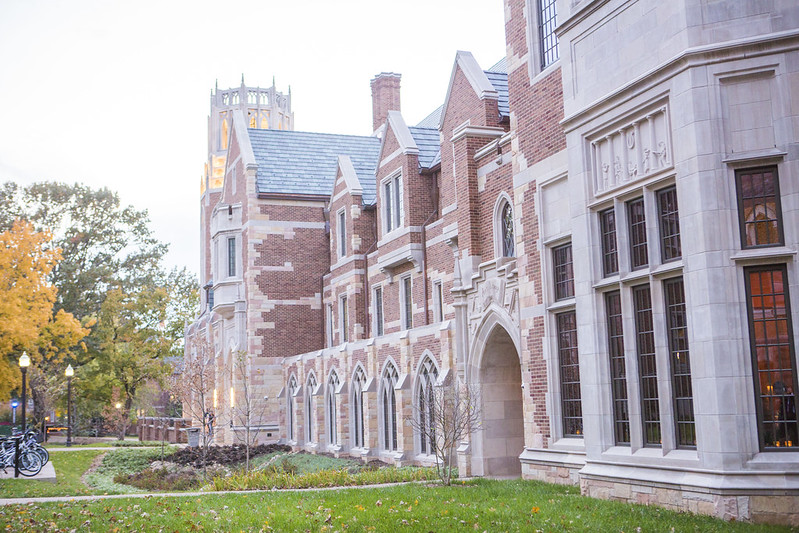
Stormwater can also be expressed as a design feature integrated in the park-like setting of campus. FutureVU aims to utilize a campus-wide approach to stormwater by implementing a variety of green infrastructure and low-impact development practices, such as bioretention areas, in order to achieve stormwater goals. Bioretention is a technique that uses soils and plants to treat stormwater before it is infiltrated, often in the form of shallow depressions filled with sandy soil topped with mulch and vegetation. Runoff is directed into the depression and is treated through the soil media prior to infiltration.
190 trees planted in FY2019
5,498 total trees on campus as of FY2019
6 total green roofs on campus as of FY2019
2 stormwater management units (bio-retention) added in FY2019
14 total stormwater management units (bio-retention) on campus as of FY2019
ENERGY AND GREENHOUSE GAS EMISSIONS
Energy efforts are core to FutureVU and the university’s long-term sustainability strategy to significantly impact its environmental footprint in part by powering its campus entirely through renewable energy. In order to achieve carbon neutrality by 2050, the university must invest in on-site clean energy and consider investing in off-site renewable energy.
A number of key studies took place in FY2019:
- The BlueSky Energy Vision Study, a 10-month studied was carried out by the BlueSky Executive and Advisory Committees. Recommendations were released at the conclusion of the study.
- The Large-Scale Renewable Energy Study included an Advisory Committee with a diverse set of stakeholders. Recommendations were released at the conclusion of the study.
20kW of solar panels on campus as of FY2019
23,496 kWh energy saved annually from solar panels
3 solar picnic tables added in FY2019
4 total solar picnic tables on campus as of FY2019
To learn more about the broader university sustainability goals, as well as review the annual sustainability report, please visit the FutureVU Sustainability website.
WASTE AND RECYCLING
FutureVU’s long-term sustainability strategy calls for reducing the consumption of waste on campus. Strategies are focused on everything from food waste, to eliminating of single-use plastics, to landfill waste reduction, to improvements in the campus recycling program and changes in procurement strategies.
In FY2019, the university kicked off a Zero Waste Study, which included a diverse set of campus stakeholders, charged with developing an overarching strategy focused on waste diversion from landfill, waste reduction, food waste reduction and single-use plastics elimination. The final report is scheduled to be released in FY2020.
20 BigBelly solar trash compactors added on campus in FY2019
47.40% waste diversion % in FY2019
238 tons of food waste composted
418 lbs of landfilled trash per person in FY2019
7 food waste collection sites on campus as of FY2019
16 hydration stations added in FY2019
167 total hydration stations on campus as of FY2019
Elimination of Single-Use Plastics in Operations
 The university embarked on an extensive, collaborative process in FY2019 to examine the possibility of eliminating all single-use plastic water and soda bottles in campus operations throughout dining facilities, markets and vending machines. In early FY2020, Vanderbilt announced the elimination of single-use plastics, which was the result of a collaborative effort involving student organizations (SPEAR, VSG) and the Division of Administration (campus dining, facilities, SEMO). Efforts will save more than 430,000 plastic bottles per year and over 1.7 million bottles during a graduating class’s four-year experience. The amount of plastic saved in one year is enough to cover the university’s football field almost 1.5 times.
The university embarked on an extensive, collaborative process in FY2019 to examine the possibility of eliminating all single-use plastic water and soda bottles in campus operations throughout dining facilities, markets and vending machines. In early FY2020, Vanderbilt announced the elimination of single-use plastics, which was the result of a collaborative effort involving student organizations (SPEAR, VSG) and the Division of Administration (campus dining, facilities, SEMO). Efforts will save more than 430,000 plastic bottles per year and over 1.7 million bottles during a graduating class’s four-year experience. The amount of plastic saved in one year is enough to cover the university’s football field almost 1.5 times.
SUSTAINABLE BUILDING AND PURCHASING
FutureVU considers sustainable infrastructure as an important element to ensure changes to the built environment are handled in an environmentally responsible and efficient manner. The university aims to impact the built environment in positive ways and minimize negative impacts as much as possible.
21 total LEED certified buildings on campus as of FY2019
2 buildings received LEED Gold status in FY2019 (Engineering and Science building, Eskind Biomedical Library
1 building designed to achieve WELL certification (certification pending) and open in FY2019
Highlighted Sustainable Landscape and Building Projects Completed in FY2019
Fleming Yard
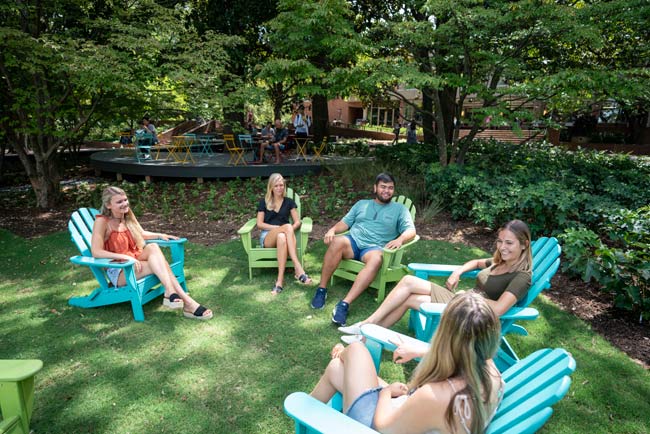
Fleming Yard, the outdoor space between Alumni Lawn and Sarratt Student Center, was redesigned and upgraded in the summer of 2019. The redesign was a culmination of collaborative efforts between students, faculty and staff. After a series of FutureVU feedback sessions, the Division of Administration partnered with Professor of the Practice in Civil and Environmental Engineering, Lori Troxel, to incorporate student feedback into creating and maintaining sustainable, accessible and park-like environments on campus. Students offered their research, ideas, feedback and design concepts for the Fleming Yard area, which were then merged into a comprehensive proposed design. The proposed design became a reality and opened fall semester 2019. The final design represents a significant re-imagining of the space while maintaining all of the trees in the area. Sustainable features include recycled plastic decking, the first campus outdoor hydration station, LED lighting, and a stormwater and filtration system that will supply water to a fountain sculpture designed by students and built by Vanderbilt staff. A variety of accessible pathways and routes are incorporated, and upgraded accessible and sustainable furniture will be arriving fall of 2019.
School of Nursing

The School of Nursing building expansion, which opened January 2019, was designed to target LEED Gold and WELL Silver certification. Once the certification process concludes, the university anticipates that this building will be the first complete, ground-up structure in Nashville to carry the WELL designation. The WELL Building Standard is a performance-based system of measuring, certifying and monitoring features that affect human health and well-being in the built environment, including air quality, water, nourishment, light, fitness, comfort and mind. Wellness goes hand-in-hand with the university’s broader consideration for the impact of the built environment on the way we live, and is aligned with FutureVU principles. WELL Silver certification is garnered by meeting specific requirements in building design and implementing specific operational policies, such as housekeeping standards.
TRANSPORTATION AND MOBILITY
Issues of transportation and mobility are paramount to FutureVU efforts given the goals to beautify the campus, enhance the park-like character community members enjoy and better connect areas of campus that feel disconnected. FutureVU calls for the diversification of transportation options, prioritization of pedestrian mobility and improvement of accessibility. In addition, commute travel accounts for a significant portion of the campus’ greenhouse gas emissions (GHG), and reducing those emissions is paramount to the university’s long-term sustainability strategy.
The university is at an important inflection point and students, faculty and staff have come together as a community to discuss the future of the campus footprint and engage in dialogue to develop solutions in order to improve sustainability and offer healthier, more flexible ways of traveling. Providing options, flexibility and choices for Vanderbilt community members is integral to efforts. During the course of FY2019, the university embarked on the development of a transportation demand management plan, MoveVU, which will be released in FY2020.
FY2019 Accomplishments
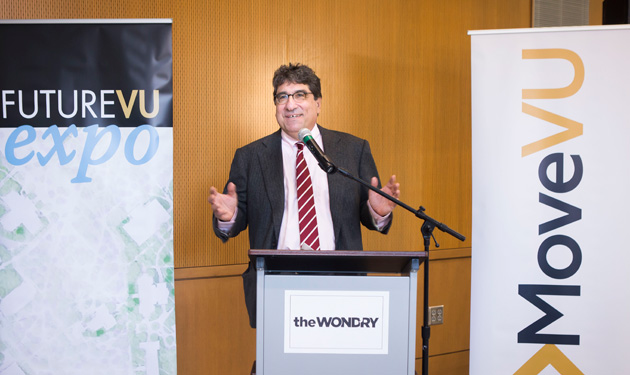
Vanderbilt was awarded and announced a $4.5 million, three-year federal grant, which the university will match, in November 2018. The $9 million total will fund aspects of the MoveVU plan, including shuttle operations, shuttle shelters, bike share shelters, and other efforts to encourage greater use of sustainable travel options. The CMAQ grant, which is a part of the federal Congestion Mitigation and Air Quality (CMAQ) Improvement program, provides dedicated federal funding to transportation projects that improve air quality and reduce congestion. The grant was the culmination of a unique collaboration with faculty, administrators, staff and students. Vanderbilt is also installing motion and air-quality sensors across the campus and its periphery to understand how people navigate campus and any air quality issues present. The MoveVU plan will launch a variety of initiatives, with funding support from the CMAQ grant, in upcoming years.
Safety
In the summer of 2019, speed limits on campus were lowered as a part of the university’s ongoing commitment to pedestrian safety. In addition, starting in June 2018, Vanderbilt Public Safety began photographing every intersection and crosswalk in the campus area to aid in submitting repairs and upgrades to ADA standards to Metro Public Works. 14 intersections were submitted for repairs in FY2019, often for one or more crosswalks at each intersection. Repairs have included the addition of striping, trunnion code pad placement and/or ADA sidewalk ramps. Vanderbilt Public Safety also worked with Metro Public Works to add several additional signs on crosswalks along West End Avenue and 21st Avenue to aid in pedestrian safety.
4 audible signals added to intersections in FY2019
1 new intersection traffic signal added in FY2019 at Children’s Way and 24th Avenue South including land re-designation and light sequencing to aid in traffic flow and pedestrian safety
1 new traffic light proposed in FY2019 at 24th Avenue South and Pierce Avenue. Survey was conducted measuring the amount of traffic (vehicle and pedestrian) and a light is planned for installation in FY2020.
Scooter safety video produced and released in collaboration with undergraduate students to demonstrate how to be responsible electric scooter users
Electric scooter safety class developed and 1 class held prior to fiscal year end. More to follow in FY2020.
Dockless bike and electric scooter safety tip cards mailed to all departments and distributed in all residence halls
Infrastructure

The first sustainable, app-based shuttle shelter was added to campus in FY2019. Designed by undergraduates in the School of Engineering and partially funded through the Vanderbilt Green Fund, which provides seed funding for student ideas that improve the university’s sustainability goals, the shelter is the first fully recyclable, green and technology-driven shelter on campus. Additional shelters, based on the initial student design, will be added to campus in the future.
In addition, with the establishment of Metro Nashville’s one-year pilot program allowing dockless bike, electric bike (e-bike) and electric scooter (e-scooter) companies to operate on public rights of way, Vanderbilt aligned with city efforts to allow companies to operate on campus if they adhere to Metro and additional Vanderbilt guidelines. Along with scooter safety efforts mentioned above, dockless bike and scooter parking areas were established on campus and continue to be evaluated.
4 bike repair stations added in FY2019
7 total bike repair stations on campus as of FY2019
30 designated bike and scooter parking areas were added in FY2019
Parking
Over 82 of the university’s 333+ acres, or roughly 25 percent, are currently dedicated to parking. In addition, based on a campus-wide utilization study conducted in 2019, approximately 72% of campus parking is being used during peak A.M. and P.M. periods. This equates to almost 28% of campus parking not being utilized. A utilization study in 2016, during the land use planning process, yielded similar percentages. In order to ensure the campus’s limited, precious resource (land), is utilized for the highest-priority items aligned with the academic mission of the university, as well as adhere to FutureVU principles and values, re-thinking where parking is located and how community members can better enjoy and traverse across campus is vital. The university will continue to consider ways to better connect campus, while also emphasizing accessibility and pedestrian mobility.
521 parking spaces removed in FY2019
250 total ADA parking spaces on campus as of FY2019
ACCESSIBILITY AND INCLUSION
FutureVU aims to clearly contextualize inclusion in the built environment through careful space design. Goals include promoting social interaction and ensuring accessibility for all community members. In May 2017, the university launched a comprehensive accessibility study with the long-term goal of making indoor and outdoor areas accessible and inclusive. The study was a multi-step process that included critically assessing and documenting different accessibility features on campus, integrating data collected with VU technologies and abilities to create an authoritative database for accessibility and other issues, and launching a task force to create an Accessibility Master Plan. The master plan was finalized and endorsed in FY2019.
Infrastructure Improvements
162 light poles were replaced
690 linear feet of sidewalk replaced/repaired
905 linear feet of fencing removed
477 doors adjusted to proper weight
403 restroom fixture height adjustments
Additional Inclusivity Improvements
21 gender inclusive restrooms added in FY2019
148 total gender inclusive restrooms on campus as of FY2019
4 lactation rooms added in FY2019
19 total lactation rooms on campus as of FY2019
COMMUNITY ENGAGEMENT
Community engagement has been a founding pillar to the development of FutureVU. Similar to the academic strategic planning process, the land use planning process was open and inclusive, involving over 1600 individuals from across the community (faculty, staff, students, alumni, trustees and Nashville community members). The land use plan represents innovative ideas that have emerged through collaborations with the Vanderbilt community. Broad consensus and support of the overarching guiding principles has been a cornerstone of efforts. Engagement has continued as the university embarks on the implementation of FutureVU.
FY2019 Engagement Statistics
Over 50 myVU articles on FutureVU efforts
651 social media posts related to FutureVU
13 building project/construction related newsletters issued (West End neighborhood and Peabody neighborhood)
Over 8 key events held including visioning sessions, town halls, pop-up events, expo events and more
Key Awards
- Vanderbilt University was recognized by the Nashville Civic Design Center for its participation in PARK(ing) Day 2018. The university won the “Best Use of Space” award and “Golden Phone” award for the most text-in votes by visitors.
- Vanderbilt University’s pilot of the bike-sharing service ofo won a Tennessee Sustainable Transportation Award from the Tennessee Department of Environment and Conservation on Sept 18, 2018.
- Vanderbilt was recognized for social media engagement during city’s Commuter Challenge in May 2018.

